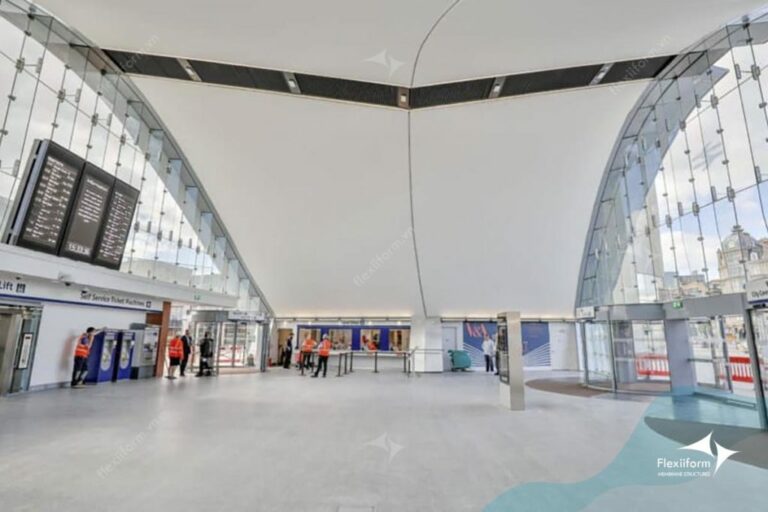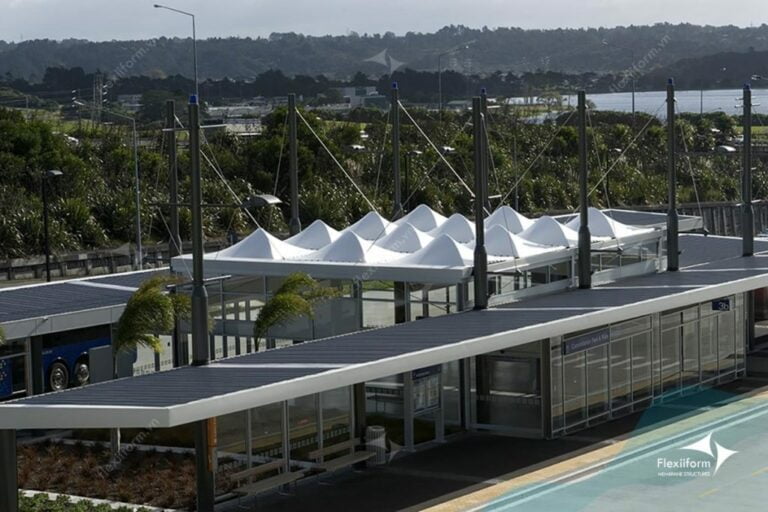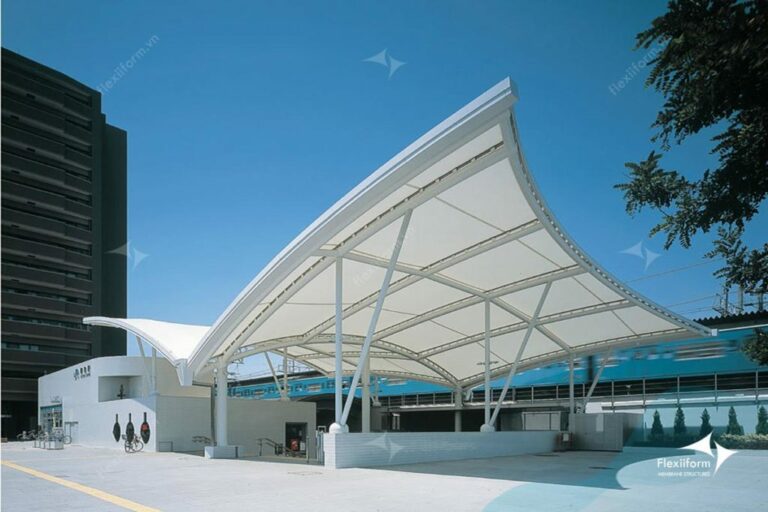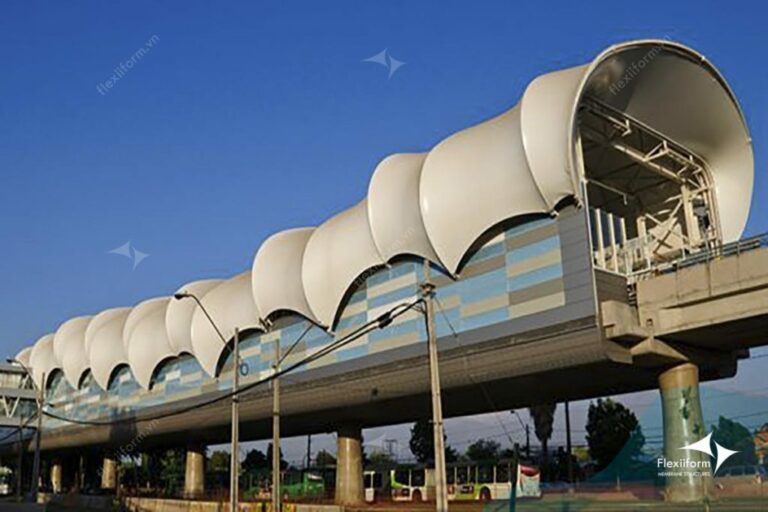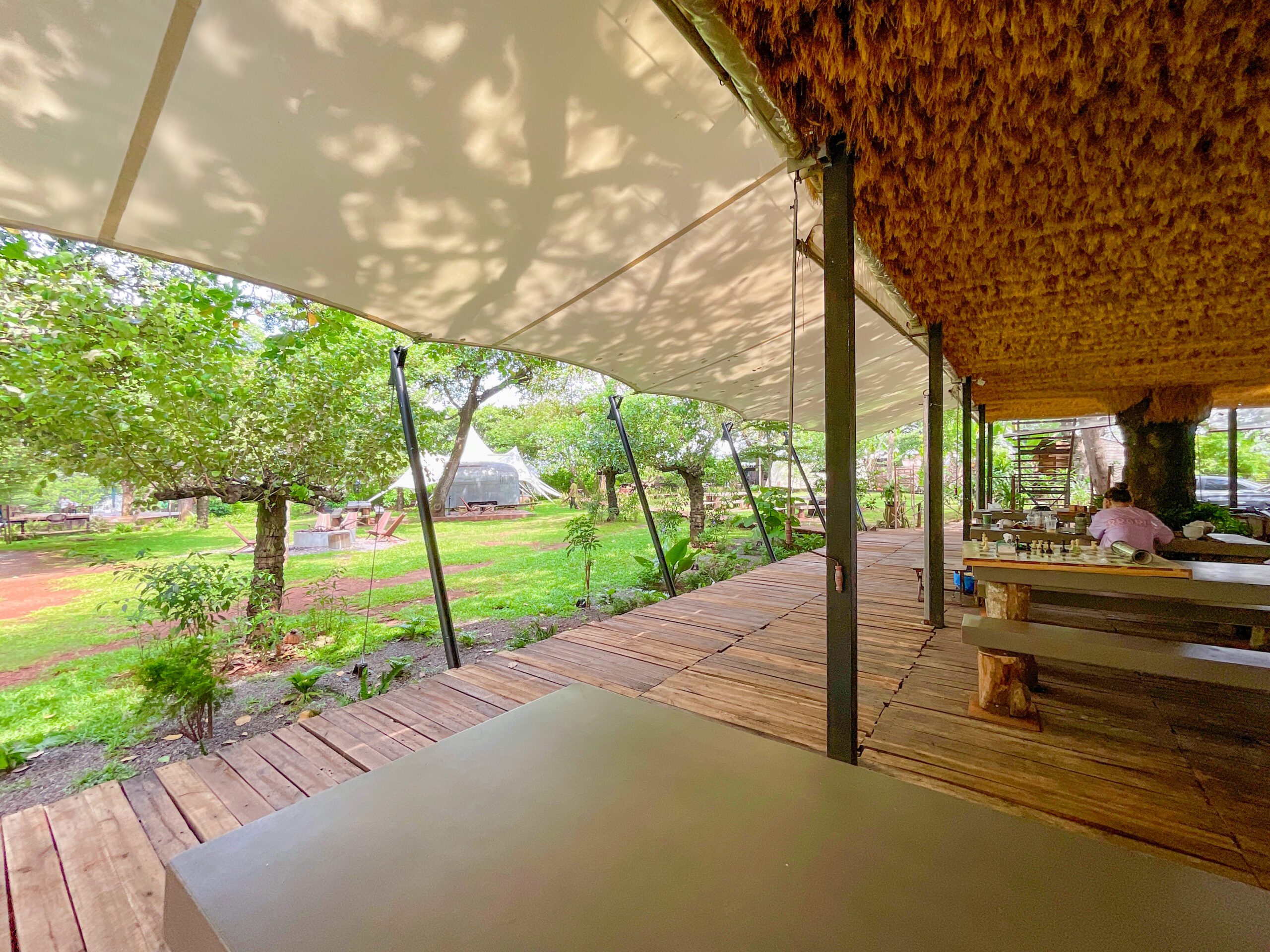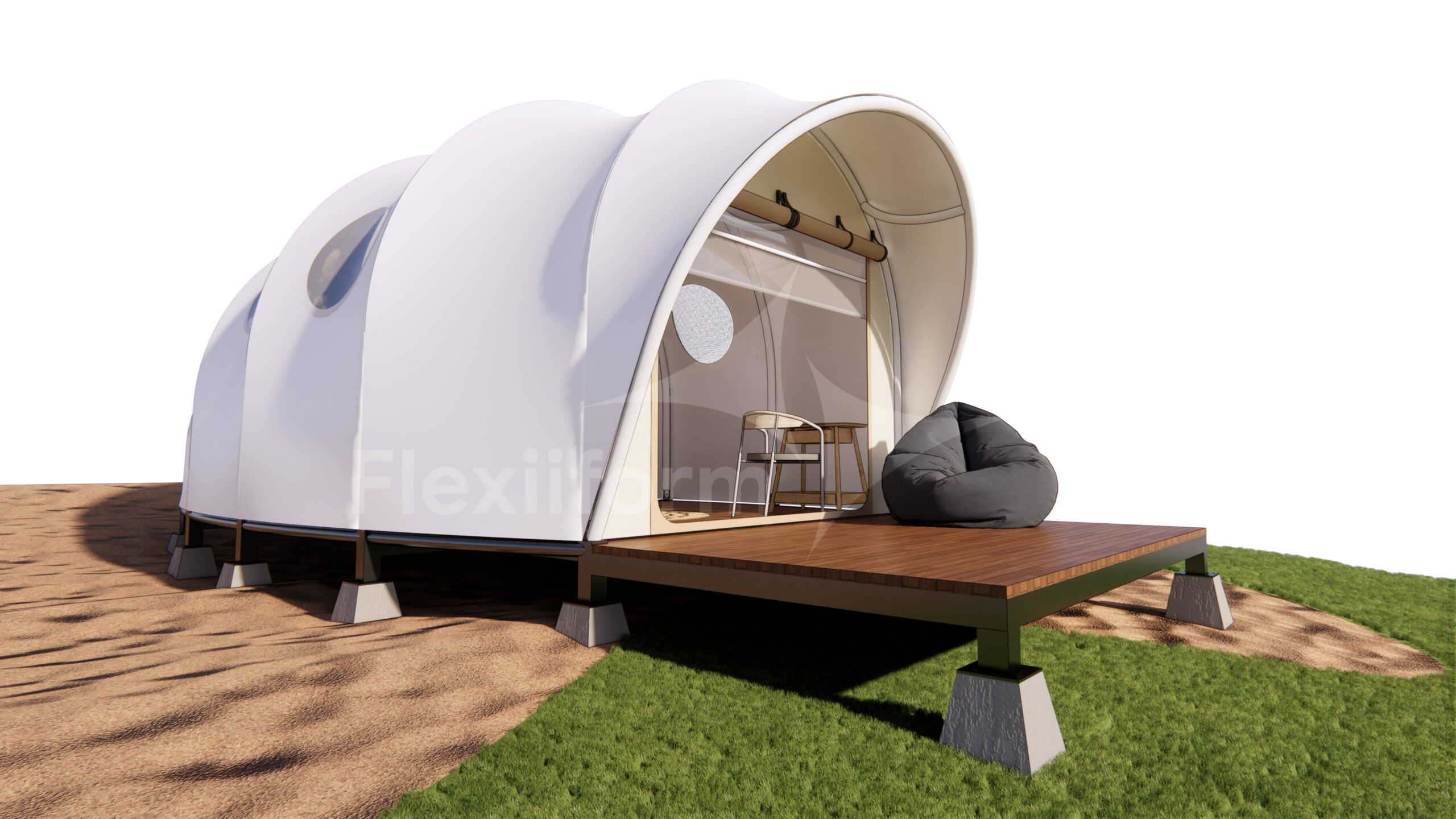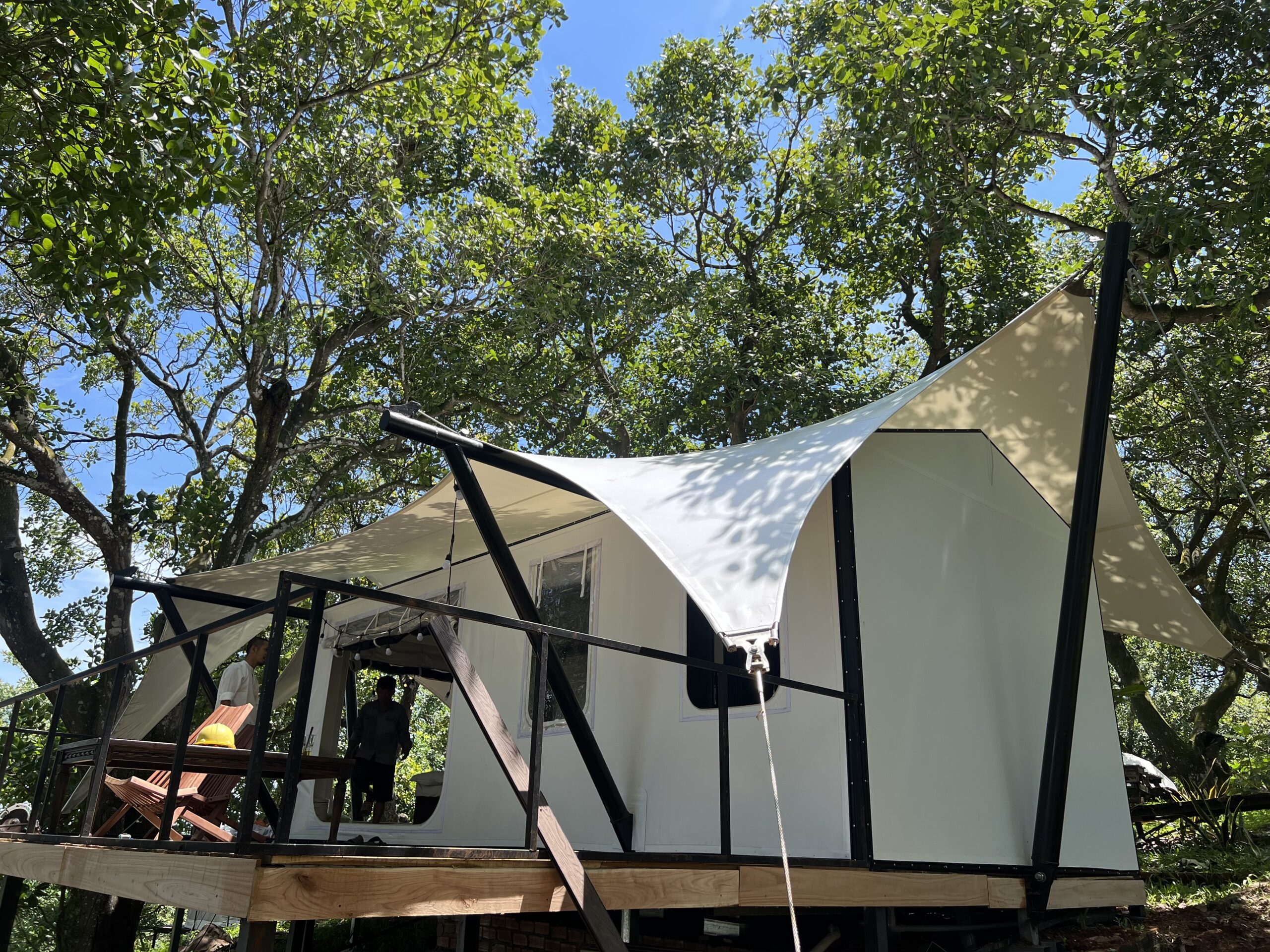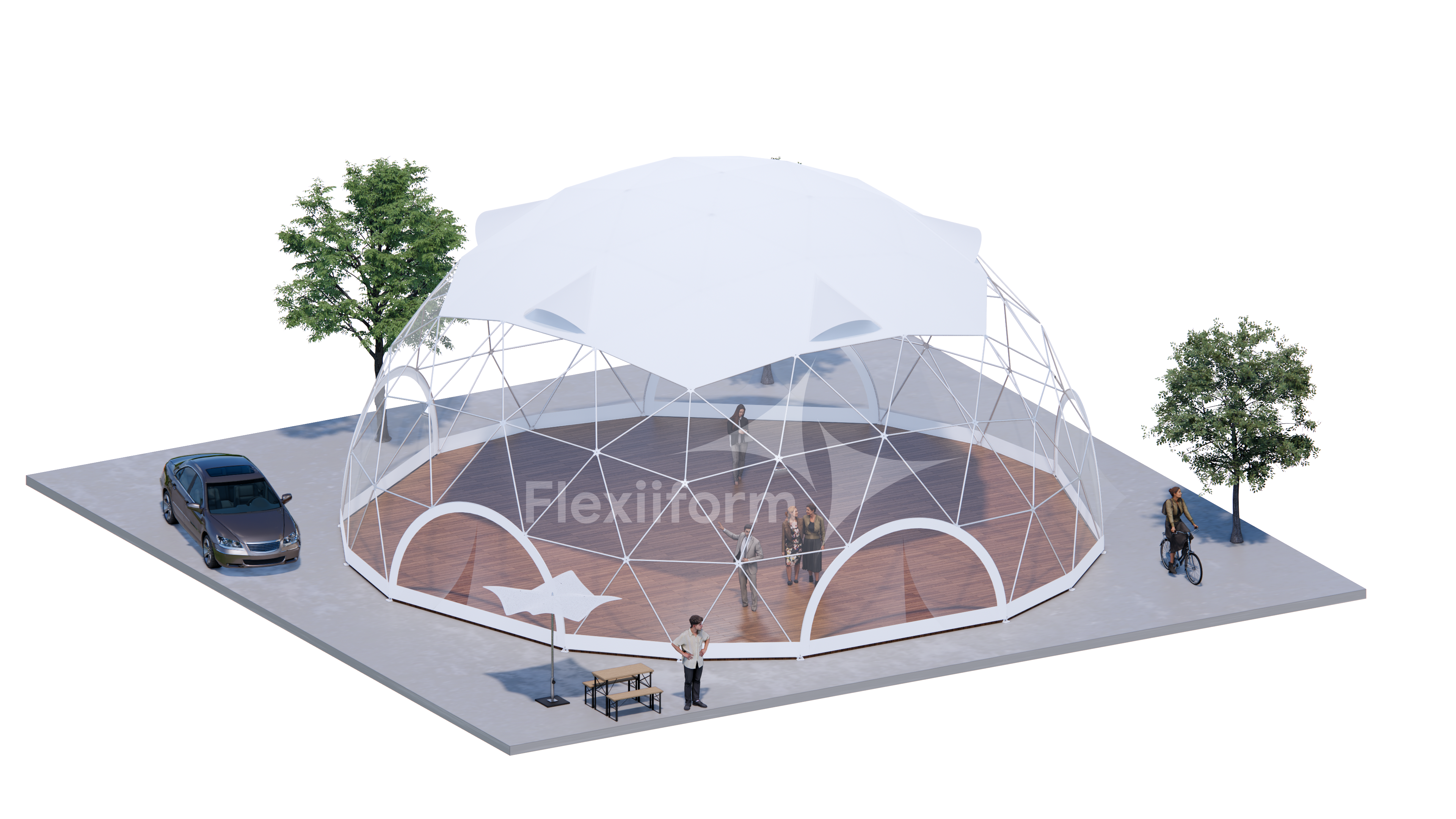Current Situation and Solution: Application of Architectural Tensioned Canvas Canopy for Stations
In modern architecture, optimizing space and ensuring the covering performance for large-scale structures such as stations and airports is a technical challenge. The station canopy is made of architectural tensile fabric (Tensile Membrane Structure), an advanced material structure, discovered and developed by a famous German architect. Free OttoThis type of structure applies the principle of tension to the frame and membrane system, featuring a lightweight structure and impressive span capacity, providing an effective and aesthetic solution for large-scale infrastructure projects.
—
Technical Requirements Analysis & Solution Context
Large-scale railway stations, airports and public areas require a roofing solution that not only provides comprehensive protection from extreme weather conditions, but also ensures aesthetics, natural light transmission and minimal disruption during construction. Traditional materials are often heavy, limited in form and can be costly in additional structures. This context creates a need for a material that is lightweight, durable, flexible in design and easy to install, while also being suitable for the scale and characteristics of public buildings.
—
Technical Solutions
The solution of station roofing using architectural stretch canvas is the optimal choice, thanks to the variety of materials and efficient installation process.
Three popular materials for station canopies
The variety of materials, colors and designs of canvas allows architects to be creative in iconic spaces. The three main materials commonly used in the design and construction of station canopy models are:
- PVDF (Polyvinylidene Fluoride): It is a 3-layer tarpaulin, which is resistant to weather conditions, has high durability and flexibility. The fabric is woven into the base and treated with resin on both sides, with the center base usually being polyester or fiberglass. Through continuous improvement, the weather resistance and anti-rust properties have been improved. PVDF membrane is self-cleaning and can last up to 15 years.
- PTFE (Polytetrafluoroethylene): The main characteristic of PTFE is its inherent “non-stick” properties, which resist the adhesion of dirt and rainwater, which can help keep the surface clean. The installation of PTFE-coated fiberglass fabric requires more care and attention to detail than PVDF. PTFE fabric is the preferred choice when cleaning is difficult or impractical, with a lifespan of up to 25 years.
- ETFE (ethylene-tetrafluoroethylene copolymer): Features a stretch feature that creates a curve for the canopy. This is a transparent canvas that provides protection from rain and sun but allows light to pass through (up to 95%), allowing plants underneath to grow naturally. ETFE is unaffected by UV rays, air pollution and other forms of environmental weathering. It is the top choice for a simple and economical canopy, with the amount of light passing through adjustable depending on the pattern on the canvas.
Based on usage needs, personal preferences and investment costs, investors can consider choosing the most suitable materials and roofing models to bring optimal usage value and aesthetic efficiency.
Installation procedure
The design and construction of station canopy models from tensioned canvas is a combination of straight, long, strong lines of steel structure with soft curves of canvas. The creativity of architects and the meticulous calculation of structural engineers will produce station canopy models with the best applications.
The two main forms of tensioned canvas roof construction are: connecting to existing structures or connecting to a column system designed and built to suit the space. With a lighter weight than traditional roof fabrics and a simple, quick installation process, it helps to minimize disruption to the operations of terminals and airports.
—
Results and Performance Evaluation
The application of tensioned canvas canopies for stations has proven to be highly effective in enhancing the functionality and aesthetics of large public buildings. The versatility of tensioned canvas materials allows architects to design unique canopies, turning the station into not only a transit point but also an architectural work. The high durability, resistance to harsh weather conditions and self-cleaning ability of materials such as PVDF, PTFE, ETFE help maintain the beauty and performance of the canopies for a long time, minimizing maintenance costs.
Furthermore, the lightweight nature of the stretch fabric and the efficient installation process help shorten the construction time, minimizing the impact on the operation of the terminal and airport. The natural light transmission ability of some stretch fabric materials also contributes to saving lighting energy, while creating a spacious and comfortable space for passengers and users.
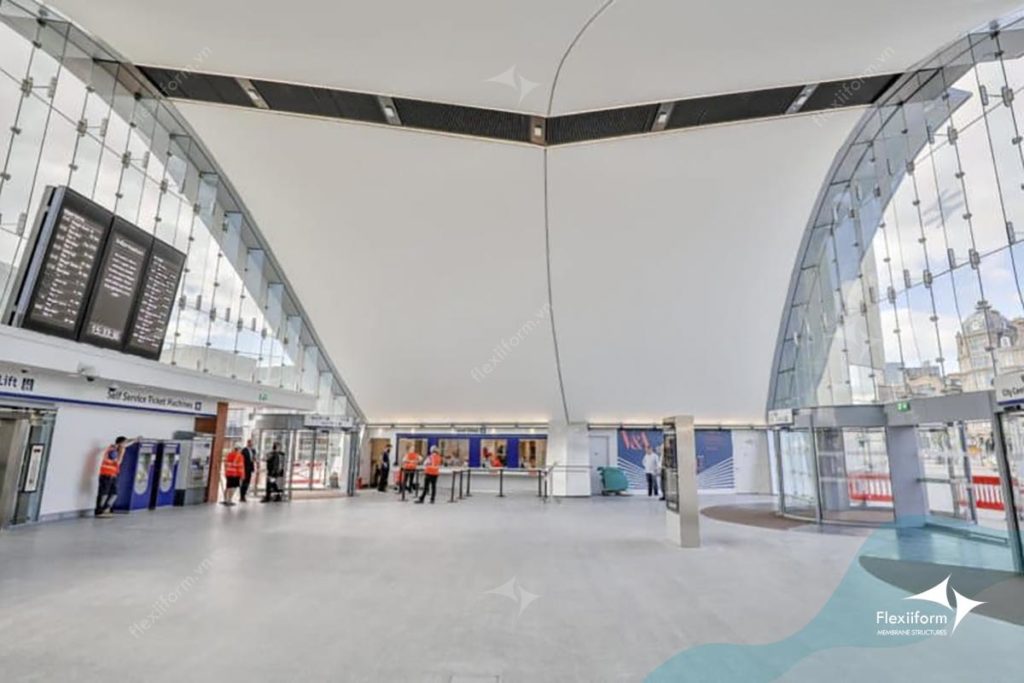
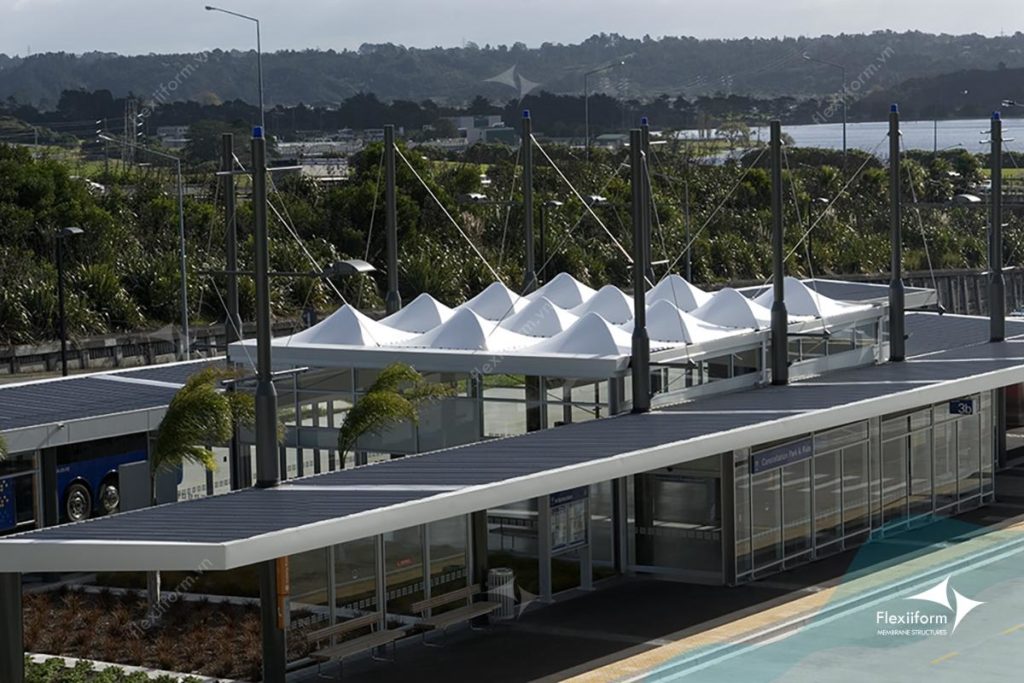
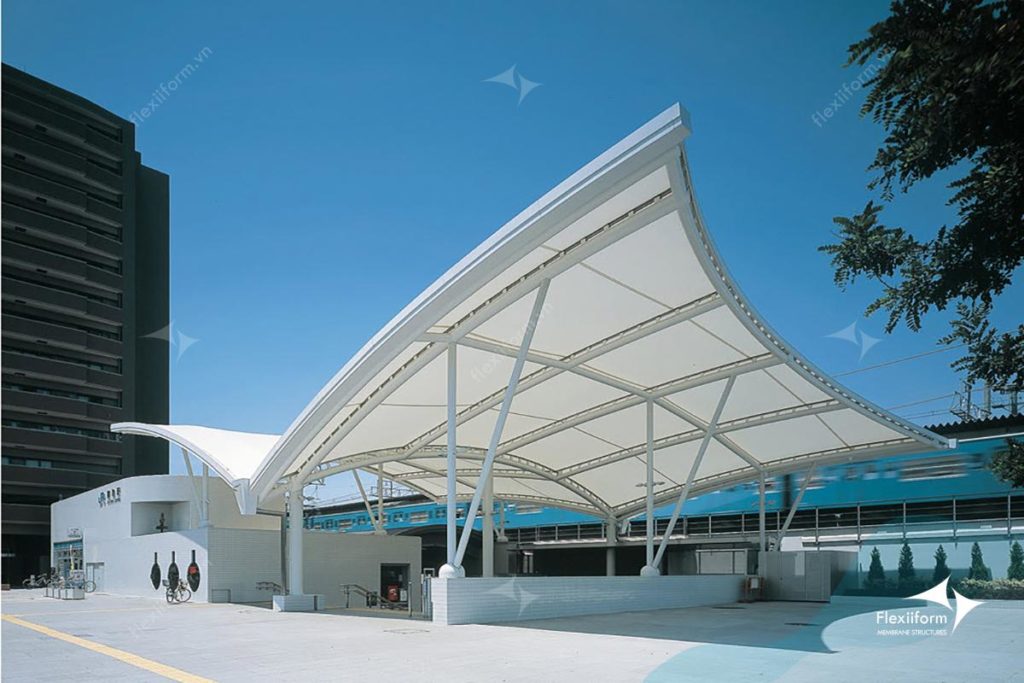
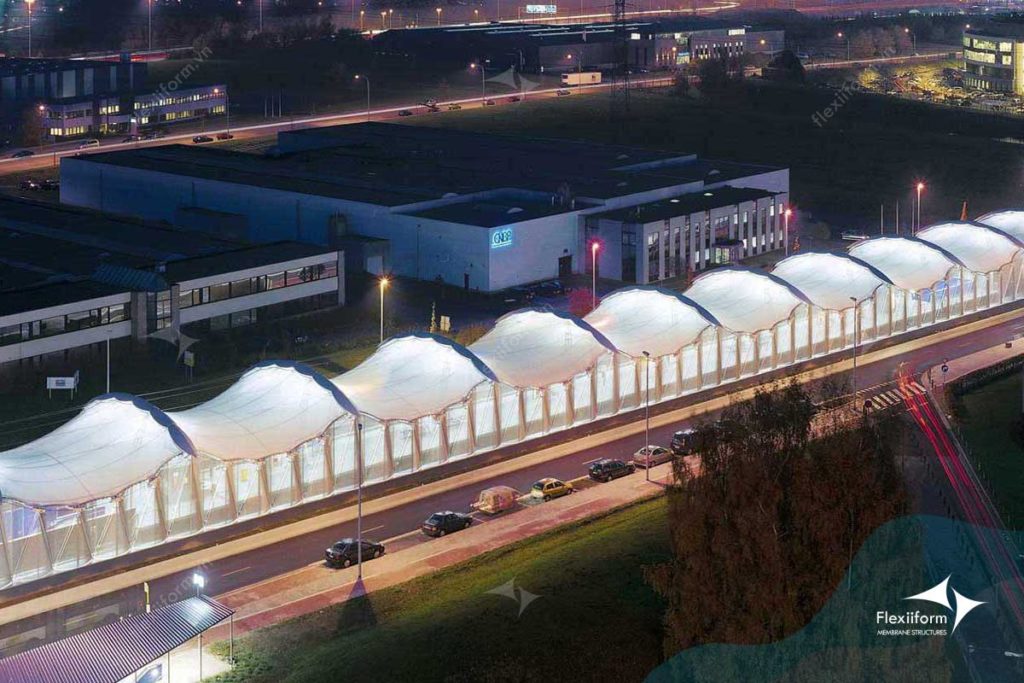
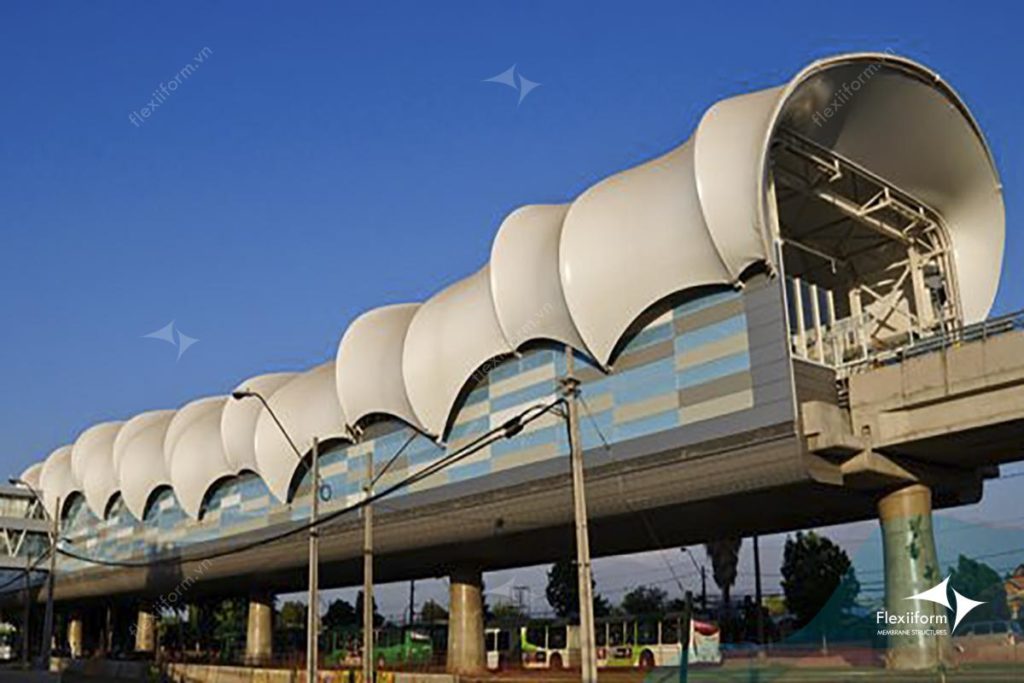
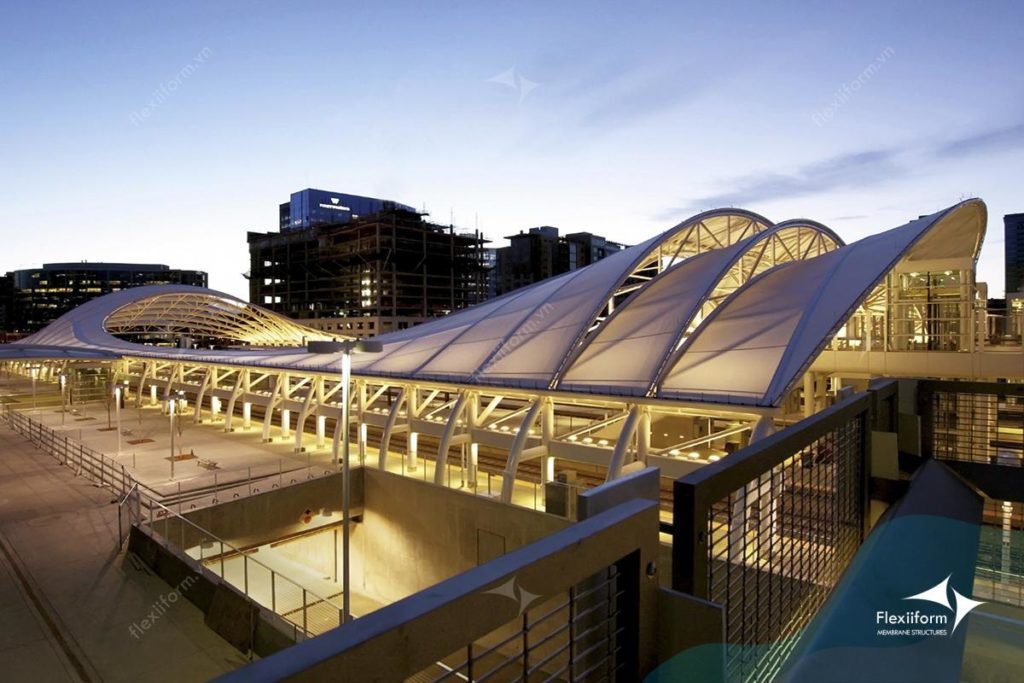
—
Contact Technical Consulting
Flexiiform is proud to be one of the leading units in Vietnam providing solutions for designing and constructing tensioned canvas. With its predecessor originating from the company FasTech, Flexiiform team gathers experts with over 10 years of experience in the industry along with a team of consultants providing the right solution according to the requirements for a variety of models and projects at home and abroad. We are confident in designing, manufacturing and constructing quality station roofing projects according to international standards, bringing unique and sustainable solutions to your project.
For expert advice on tensile roofing solutions or to request a detailed quote, please contact us.
Contact information:
Company: Flexiiform
Phone: +84 8678 68830
Website: https://flexiiform.vn/
Fanpage: https://www.facebook.com/flexiiform/



